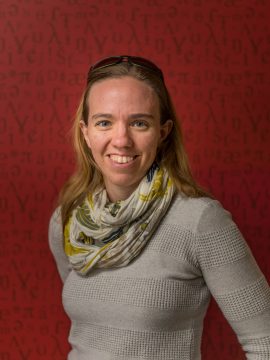Kathleen Currie Hall
Research Area
Education
B.A., Linguistics, University of North Carolina at Chapel Hill, 2003
M.A., Linguistics, The Ohio State University, 2007
Ph.D., Linguistics, The Ohio State University, 2009
About
My research focuses on the formational patterns of languages (phonology) using techniques from a wide variety of areas, including interactions between phonology and the physical articulation and acoustic or visual properties of formational units (phonetics), the processing of such units in the brain (psycholinguistics), and the use of language to convey social information (sociolinguistics) and meaning (semantics). I am especially interested in how phonological patterns apply and arise in sign languages, where the modality of communication is visual.
Methodologically, I am particularly interested in how phonological categories and processes can be objectively quantified using tools from probability, statistics, and information theory. This has led to the creation of a free, open-source piece of software, Phonological CorpusTools, which aids in the replicable quantification of phonological patterns in languages and enables me and other scholars to examine large corpora of phonologically transcribed data. I am currently involved in the development of a companion piece of software, Sign Language Phonetic Annotator-Analyzer, to facilitate the transcription and analysis of signed languages.
The kinds of questions I am interested in are:
- what discrete categories of sound or form do language users extract from a continuous acoustic or visual signal?
- what relationships may hold between these categories in a given language?
- what patterns and processes apply to these categories?
- what linguistic information do these categories convey?
- how do language learners acquire these categories?
- to what extent are these categories, relationships, and processes psychologically real and reflected in perception and production?
- what cognitive processes have led to these categories, relationships, and processes?
- how can these categories, relationships, and processes be modeled in an objective and predictive way?
Teaching
Publications
Please see https://blogs.ubc.ca/kathleencurriehall/publications/ for the most up-to-date information about my publications.
